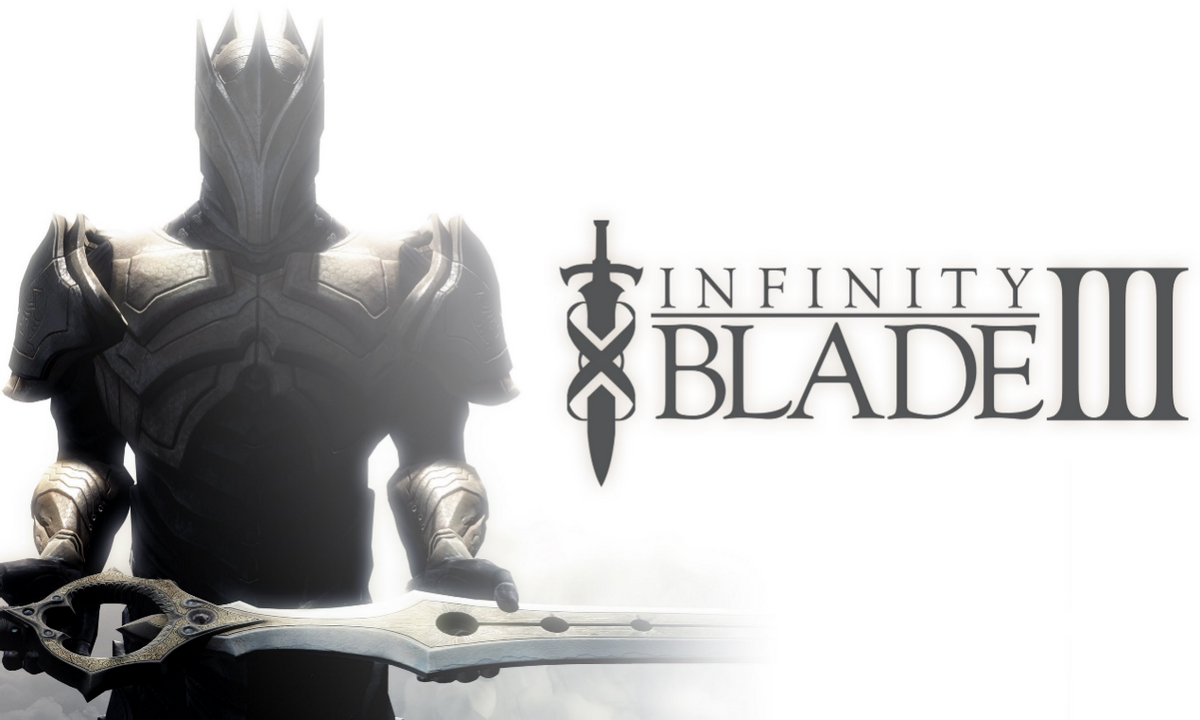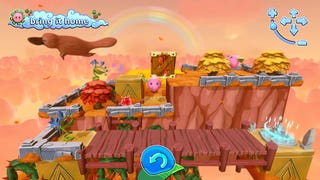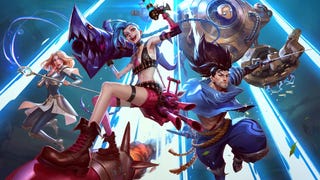The best graphics masterpiece on mobile phones, the Infinity Blade series, why has it disappeared?

If someone asks: Which handheld game has the best graphics? It’s quite difficult to give an answer, after all, today’s secondary handheld games all have some say in the matter; but if we go back 12 years, that is, to the period after 2010, I believe most people, like me, will only give one answer, and that is Infinity Blade.The reason is quite simple and brutal, because this is really the best graphics, the coolest action, the most innovative mechanics, the most beautiful equipment, in short, the most 3A quality handheld game you could possibly play at that time, and it can be said that as long as you take out your phone and show it to everyone for a few minutes, no one can refuse the unique charm of this game that transcends the times.
In a way, this proves that Nokia’s idea of “handheld 3A” was a promising one, and a rather “tricky” way of solving the problem of the phone’s functionality when running large games, but in those days, Infinity Blade was really just a But back then, Infinity Blade was really just a showcase for EPIC to prove that the IOS version of their Unreal 3 engine was really powerful.
Back in July 2010, the developer of Infinity Blade, Chair Entertainment, had just completed Shadow Complex and had been acquired by EPIC, and was eagerly discussing the direction of its next game. EPIC’s own Unreal 3 engine was nearing completion and needed the perfect game to showcase the power of the engine; in a way, the two sides hit it off, so the latter asked Chair Entertainment to develop a “rich-looking” game based on Unreal 3 IOS within five months, and to present a playable demo version of this texture at the upcoming Apple Special Event within two months. The upcoming Apple Special Event.
Although Chair Entertainment happened to have the Sword Project in place, there seemed little need to “run with the bucket” and they even spent a whole week dedicated to “paper They even spent a whole week “talking about the game” to refine the gameplay concept, but it was still a tight timeframe, not to mention the incomplete state of the Unreal engine and the lack of support for quick-touch gameplay in the native iOS codebase, and they needed Epic’s full assistance to perfect the complex, touch-based interface. So according to the estimates of then Technical Director Jeremy Marstad, the small team of 12 people at the time had to abandon close to 2/3 of the game’s concept, which barely managed to complete the boss’s two-part mission to finish Infinity Blade, which looked beautiful but was actually full of all sorts of regrets from the production team.
However, to their surprise, and perhaps even EPIC’s, Infinity Blade sold 270,000 copies in just four days, earning EPIC $1.6 million, and by the end of 2011 had generated over $23 million in revenue for the publisher, and remains the fastest-grossing app in IOS history. It is still the fastest-grossing app in IOS history.
Not only that, but game critics have also praised Infinity Blade, calling it “an absolutely stunning product for any handheld device, ushering in a new era of high-end graphics”, as well as the game’s “feel-good” sword-fighting gameplay, contrasting and exciting soundtrack. The game’s “feel-good” swordfighting, contrasting soundtrack, and addictive repetitive experience – which now sounds like the kind of rhetoric you’d expect to find if you were paid to do it, but since the game review community hadn’t fallen so far, there’s reason to believe that these are the real experiences of these critics, and that they’re a good assessment of Infinity Blade’s The best praise for Infinity Blade’s ability to “build on its strengths and avoid its weaknesses”.
The question then becomes: what kind of game is Infinity Blade? And how has it carefully packaged itself so that what now seems like a flaw has become a highlight of the game that many veteran players still enjoy?
To answer the former question, it is more official: Infinity Blade is an action role-playing game for the IOS platform, officially launched on the Apple App Store on 9 December 2010, in which players take on the role of legendary warriors clad in heavy armour and wielding swords, advancing automatically along a fixed main path, overcoming obstacles, upgrading and adding points, harvesting equipment, scavenging treasures and finally defeating The main route will automatically take you along a fixed route, upgrading and upgrading, harvesting equipment and scavenging for treasure, before finally defeating the high and mighty Immortal King – or, if defeated, taking control of one of the protagonist’s descendants and making good use of the inherited ‘relics’ to make up for his father’s past.
To accomplish this, you will have to fight all the enemies you encounter along the way in one-on-one duels (not really, some levels will also feature two-on-one enemy justice), specifically learning to judge enemy attack patterns on such a full touchscreen interface, and responding flexibly by blocking at the perfect moment, dodging left and right, or using powerful but rechargeable magic at the right time Once you’ve perfectly parried your opponent’s attack, they will temporarily lose their balance and open up the door, allowing you to mimic the protagonist’s counter-attack with your sword by simply swiping your finger across the touch screen – and if you can also methodically swipe a specific combination, you’ll do a lot of damage to your enemy.
As the game progresses, the protagonist is given a variety of attribute longswords, shields, armour and magic rings, which theoretically make it possible to win every battle with half the effort; but without experience and solid basic skills, all of these fancy counter-measures are just useless fists and kicks, and the protagonist will still be beaten up in the game.
In this way, Infinity Blade demonstrates the qualities of the “Souls” genre, where the off-screen player grows alongside the protagonist and overcomes the enemy, thus gaining a great sense of achievement and a sense of immersion that breaks through the dimensional wall – looking back, the player The positive feedback from this must be the reason why the game is so addictive.
In addition, another “soulful” aspect of the game is the sense of isolation that almost spills out of the screen: all you can hear throughout is the battlefield roar, the weapons, and the “final” boss, except for a few words of dislike from the “final” boss in a voice that you don’t know what it is. There may be the occasional murmur of the breeze, but not the soft greeting of a lover, a friend, or even a shameless traitor.
Officially, this is an homage and a parody of Wanda and the Colossus, but compared to the freedom of combat and action between the two, I think it …… is acceptable to call it a homage, but to call it a parody is a bit of a brush with the heat of the day. With this malice, it’s easy to see that it’s not just the lack of freedom that makes Infinity Blade so lonely, but also the sparse variety of enemies, the unlikely richness of the scenarios, the cyclical gameplay and the seemingly non-existent story at the start, all of which have an undisguised cheapness to them; but thanks to Infinity Blade’s excellent graphics and the extremely wide variety of beautiful weapons and armour, it’s possible to convince players of this cheapness. But thanks to Infinity Blade’s excellent graphics and the extremely wide variety of weapons and armour, players can be convinced that this cheapness is a carefully planned and clever design.
What’s even more pleasing is that, to some extent, players are actually quite accurate in their judgement.
Take the story of Infinity Blade, for example, where after the player has taken the hint that everything will be fine once they’ve taken out the opening boss that humiliated them, which they have done for generations, the ending credits duly begin to roll, as if to abruptly congratulate them on finally passing the game (which requires them to unlock a certain suit).
However!
A few minutes later, the credits roll, and our protagonist actually picks up a phone (or tablet, or some other playable item like that) on the throne and plays with it with interest for a while. This is not a spoof egg paid for by Apple, as it is precisely this action that unlocks another diversion for your next journey, leading the protagonist to a whole new set of enemies and a strange mechanism – the latter of which happens to match the Infinity Sword you’ve captured from the boss earlier, opening up three hidden chambers and revealing more about them through the mouth of the boss. The boss of the game reveals more about the story of the Infinity Gauntlet.
At this point, the story is still just a confusingly simple one, but there is a vague sense that this is more than just hardcore medieval magic fighting. So when you finally defeat the three bosses and arrive at the final battlefield and see a giant sword-wielding robot emerge from the clone’s incubator, it should not be so much a surprise as an unexpected but justifiable one. The main character not only reveals the secret of the immortal God-King’s immortality, but also shows him another way to fight the undead forever in purgatory, which in turn gives the game’s repetitive experience a storytelling dimension and sets the stage for its sequel.
Of course, a game that sells well has to have a sequel. Just a year after the release of the first game, or almost as soon as the team had added extra endings and multiplayer sections to the game in a couple of dlc’s and refined the worldview with the official novel Infinity Blade: The Awakening, they hastened to release a fully enhanced Infinity Blade 2.
This more graphically stunning title follows the exciting combat system of its predecessor and the progressive reveal of truths in the cycle, but adds a gem-setting system and dual-wielding weapons to greatly increase the flexibility of the combat, as well as a lot of dialogue and some sequences that focus on the character of the protagonist and reveal his true nature, and a playful “I’ll come to your rescue, tinkerer” as a clue throughout the story. ” as a clue throughout the story, and sets up a not-so-subtle twist at the end.
In terms of story, Infinity Blade 2 follows the hidden ending of its predecessor, “Destroy the Immortal Titan”, and shows the protagonist’s desire to solve the problem once and for all years later, going through numerous hardships and loops to find a way to save the Tinker, who can fundamentally destroy the system. “It also begins to reveal the mysterious past and present life of the protagonist, thus further expanding the game’s worldview and adding another major point beyond the protagonist’s revenge to what seems to be the inevitable sequel to the game.
The question is, can this apparently lacklustre sequel continue the miracle of Infinity Blade and convince EPIC to give the game the green light for a sequel?
Of course it can.
In terms of word-of-mouth, Infinity Blade 2 has gone one step further than its predecessor and has caused a critical frenzy – IGN has even given the game a new “must play” rating and several perfect scores (on the IOS platform). It’s a testament to how much of a shocker this was back in the day.
So there’s not much to say, after three major updates to Infinity Blade 2, adding global leaderboards and a whole host of new equipment and enemies, in August 2012 Chair Entertainment did the same thing again with a brand new map and three bosses, seemingly to warm up for the upcoming sequel; and by late September 2013, although the In late September 2013, Infinity Blade 3, with much of the same action as its predecessor, but with better graphics, more content, a more detailed story, nearly two hours of animation alone, and finally some freedom, finally arrived in the midst of all the excitement. This time around, you’ve been holding your breath for a while, escaping from the prison at the start, hacking and slashing your way to the Tinkerer, and then going offline to get your lunch ……
But never mind! The former protagonist was quick to upload what the Tinker was afraid of before he died, so the task of killing the Tinker and saving the world fell to the new protagonist, Cyrus, and his female companion, Aisha, who naturally lived up to their mission, running around the map and getting all the legendary weapons to strengthen the “Infinity Blade The latter, of course, is not ashamed of his mission, and goes around the map, getting all the legendary weapons to strengthen the “Endless Blade”, not quite destroying the artificer, but successfully erasing his memory and destroying his ark base for good.
At the end of the game, a strange child builds a beach castle on the beach that looks like the Ark, as if to suggest that the Artificer will be back years later; and Infinity Blade 3’s equally impressive press averages left gamers certain that a sequel to the series would be coming soon. Instead, they received the news that the Infinity Blade series would be permanently removed from the Apple Store.
The official reason given for this was that they couldn’t afford to update the software for new hardware, but we tend to somewhat conspiratorially blame this on a disgusting plot by one of the game’s major studios – especially since the later Infinity Blade Destiny was a nostalgia scam in the name of revisiting a classic, and to many gamers it seemed as if the studio had become the company that killed Infinity Blade. The game was a great success, but I’m not sure what to say.
But I guess that’s an unfair statement to both the studio and Chair Entertainment until proven otherwise, but in this scenario the conspiracy theory is not only enjoyable but also quite logical, so instead of listening to my inescapable opinion here, why don’t you ask yourself which one you’d rather believe? Ask yourself which story you would prefer to believe ……




